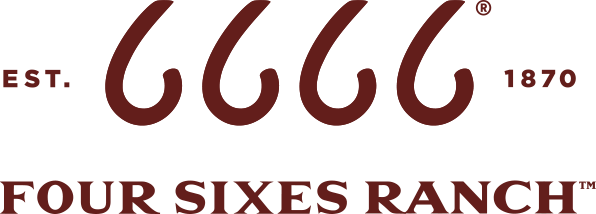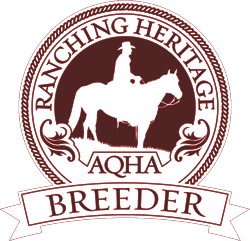Article by Robert Fears- Texas Wildlife Association
Photo by Peter Robbins
Hunting the Northern Bobwhite Quail is popular in Texas, and it can provide additional income to ranches and rural communities. The problem is that quail populations decrease during dry years and increase during periods of normal or above normal rainfall. Since rainfall patterns vary considerably in Texas, so do quail populations. A lot of time and money is allocated toward learning how to sustain bobwhite populations in a more stable manner and progress has occurred.
One of the successes was achieved by the Quail-Alliance Anchor Ranch Program initiated in January 2010. The program’s mission is to reverse the quail decline. Quail-Tech is a research and demonstration
project coordinated between Quail First, a 501(c)(3) organization, and the Department of Natural Resources Management of Texas Tech University.
The Anchor Ranch Program is conducted within a 38-county area, primarily in the Rolling Plains. Participating ranches are called “anchor ranches” because they anchor quality quail habitat throughout the study area. Research conducted in the Anchor Ranch Program is funded by the Burnett Foundation and the Park Cities and Cross Timbers Chapters of the Quail Coalition.
Many reasons for quail decline have been proposed and studied including fire ants, predators, land fragmentation and drought. All these factors can have a negative effect on quail populations, but the essentials for survival are good habitat and an ample year-round food supply.
Quail Habitat Requirements
Sufficient nesting cover is one of the primary habitat requirements for the sustainability of bobwhite quail.
“On the Texas Rolling Plains, it is usually supplied by native perennial bunchgrasses such as little bluestem, big bluestem, indiangrass and various gramas,” said Dr. Brad Dabbert, Burnett Foundation Endowed Professor, Texas Tech University. “Residual growth from the previous year is crucial and often the only thing available during the early nesting season or during drought. Hens will also nest under or within a variety of other plants including prickly pear cactus, yucca and tasajillo. Bobwhites need large blocks of nesting cover to make their nests harder for predators to find.”
“Cover requirements are different for brood rearing,” Dabbert continued. “Chicks, only an inch tall at hatch, must have space between plants to allow them to move freely with protection of overhead concealment. They also require vegetation hosting large quantities of insects, such as grasshoppers, in order to satisfy their high requirements for protein-rich food.
“Ideal habitat for chicks is an area with green leafy forbs to provide overhead protection and to attract insects. The cover should have sufficient bare ground beneath the canopy to allow chicks uninhibited movement and access to food. Ragweed, broomweed, partridge pea and croton provide excellent brood rearing cover and serve as an important seed source during fall and winter. Brood rearing habitat must be close to loafing cover for adults.”
Adult feeding and travel cover are similar to that of brood rearing with a few exceptions. Adult bobwhites eat a variety of foods so feeding cover should contain a mosaic of different plants. Feeding cover should include grasses interspersed with forbs, brushy/woody cover and a small amount of bare ground to allow for scratching, dust baths and mobility. Vegetation density should allow for concealment from predators.
“Loafing cover can encompass multiple vegetation types depending upon local conditions,” Dabbert said.
“Bobwhites will rest in the protection of perennial bunchgrasses and tall multi-stemmed forbs, but tend to favor woody haunts. Shrubs such as redberry juniper, ashe juniper, sand plum, lotebush, sand shinnery oak and spiny hackberry all provide good loafing concealment. Bare ground, shade, overhead protection from predators and the near year-round availability makes this vegetation desirable. Woody plants can also serve as a major food source.”
Roosting cover is an especially easy requirement to fulfill for bobwhites. The quail will generally roost
anywhere there is vegetation that does not obstruct a quick burst of flight. Roosting in a circle with their heads facing outward allows for an immediate escape when rousted by a predator. Roosting cover is often in the open with limited or no shelter in direct proximity to allow for unobstructed flight in all directions.
Survival From Predators
“Quail are vulnerable to numerous predators during all their life stages,” Dabbert said. “Small and medium sized mammals such as cotton rats, striped skunks, raccoons and coyotes are nest predators. Ground dwelling birds and snakes will eat an entire clutch of quail eggs. Until two weeks of age, bobwhite chicks are vulnerable to several species of reptiles, small mammals and carnivorous birds including ravens, hawks and road runners. Even carnivorous insects, such as centipedes, are chick predators. After two weeks of age, quail are able to fly and escape predators.”
Adult quail are susceptible to a wide array of raptors including Cooper’s, sharp-shinned, Swainson’s and redtailed hawks. They are also preyed on by mammalian predators such as coyotes and bobcats.
“Success in sustaining quail nesting through mammalian predator reduction depends on the original predator population,” explained Dabbert. “If the initial concentration is low, removal will not increase nesting success. Mammalian predator removal has been effective in the Southeastern United States, but not in Texas.”
The most tried and tested approach to reduce predator effects on bobwhite quail is to improve habitat quality, especially escape and loafing cover. Quail have evolved to compensate for widely variable annual mortality and nest losses by producing large clutches of eggs and attempting to nest up to three times during each season. This is possible if sufficient food is available.
Ample Food Supply
“Due to many different types of rangeland plants and insects across the Rolling Plains, the bobwhite’s diet is diverse,” Dabbert said. “Seeds, foliage, insects, berries and agricultural grains comprise their typical menu. Quality nutritional forage produces heavier birds with added body fat. This provides bobwhites a greater likelihood of withstanding inclement weather such as severe winters and drought. Body fat also allows quail to enter the breeding season in good condition and reduces their physiological stress.”
Regardless of good habitat management, quail food supplies will dwindle during dry periods especially in
prolonged drought. When natural foods are not available, it becomes necessary to feed supplements in order to sustain populations. Supplemental feed is more effective when broadcast along roadsides or feeding trails into the adjacent vegetation in contrast to food plots and stationary feeders. Broadcasting distributes grain over a large area and allows quail to remain concealed in nearby vegetation while feeding.
Four Sixes Ranch
One of the anchor ranches is the Four Sixes near Guthrie, Texas, which has had great success in reversing quail decline. The Quail-Tech research team estimated one 14,000-acre pasture on the ranch to contain more than a bird per acre during the fall of 2013. Birds flushed in the pasture supported this estimate.
Joe Leathers, Four Sixes Ranch manager, reported flushing 2,000 bobwhites while working pointing dogs with no shooting. These data were gathered during about 52 hours in the field spread over three weeks. Leathers averaged three conveys per hour. These numbers were achieved at the end of a severe three year drought through good management.
“A desire to increase native grasses prompted the ranch to reduce juniper (cedar) stems in 2009,” Dabbert
said. “Stems left in the pastures provide important cover for bobwhites, especially during times of extreme heat and cold.
“The Four Sixes also disks 120 linear miles per year to promote forb growth when sufficient timely
precipitation occurs. When successful, these disk lanes contain a combination of croton, ragweed and other species excellent for brood habitat in spring and providing seeds in the fall.”
“Grazing management is the foundation for bobwhite population growth on the Four Sixes,” Leathers said. “By comparing quail abundance with vegetation height, it was determined that a minimum vegetation height of 16 inches is required for good quail protection and 30 inches is optimal. We have been able to maintain vegetation height above 30 inches which has had a large positive effect on quail numbers.”
“We have also taken a proactive approach to quail nutrition,” Leathers continued. “In 2009, we began
providing supplemental feed consisting of 90 percent milo and 10 percent corn. The ranch switched from
stationary feeders to broadcasting feed from the edge of the road to a distance of 60 feet into the vegetation. Three hundred pounds of feed per mile is broadcast once every two weeks throughout the year. Compared to birds not fed, survival rates increased by 10.6 percent during the 2010-2011 season and 21.9 percent in 2011-2012. Physical condition improved going into the breeding season allowing the hens to nest earlier and longer which increased their likelihood to re-nest.”
“A major winter storm hit the Four Sixes in 2014,” Dabbert said. “Birds outside the supplemental feeding area suffered a 48 percent mortality rate while supplemental fed birds averaged only five percent mortality. These numbers show that quail without supplemental feed suffered 10 times greater mortality than birds that were supplemental fed.”
“The Four Sixes Ranch uses the hunting management principle that killing fewer birds today will result in
more for the future,” Leathers said. “We have not harvested bobwhites in more than three years. We believe that harvest should be managed on a pasture-to-pasture basis with a long-term focus.”
“Managers should understand that while Texas’ bobwhite hunting regulations are designed to protect quail populations on a statewide basis, it is possible to have too much hunting pressure on individual pastures,” Dabbert said. “Consequently, landowners should take a conservative approach and limit the total kill to 20 to 30 percent of the population within pastures with sufficient populations for hunting. Population size is estimated using fall covey counts and limits are set on a pasture by pasture basis. During drought years, when there are no replacement birds produced, we encourage landowners to forego shooting quail and just enjoy watching dogs point coveys.”
Circle A Ranch
Another anchor ranch is the Circle A near Archer City, owned and operated by George Allen. The ranch is
primarily managed for bobwhite quail supplemented with a stocker cattle operation. When the ranch was
purchased in 1998, the quail population was average. As a result of good habitat establishment and
supplemental feeding, nine coveys were flushed during a six-hour period during the 2010/2011 drought and 25 coveys during a year with spring rainfall.
“We use a variety of land management practices to establish and maintain quail habitat,” Allen said. “Our first task was to reduce the amount of brush by sculpting, and then we began maintaining forb production and plant diversity with controlled burns and grazing with the stockers.
“We start stocking calves in October and by the following June, they have been shipped. The stockers are
rotated through pastures in a manner to prevent grass from becoming too dense for quail travel. Winter wheat is raised for supplemental grazing in the event sufficient pasture forage isn’t available. A portion of the wheat is allowed to seed to provide feed for the quail.”
Forb production and plant diversity is encouraged by alternate strips disked across pastures during the fall. Seventy-five-foot wide strips are disked with the plowed lanes placed 75 yards apart across the pasture.
“I sincerely believe that good habitat is the first prerequisite for quail sustainability,” Allen said. “Second, I feel that supplemental feeding is required for sustaining populations through dry periods and cold winters. We broadcast milo along 20 miles of road every week through the entire year. The broadcast feeder spreads grain from the edge of the road into the vegetation to allow the birds to feed under the safety of cover.”
The above described habitat improvement and quail sustainability techniques used on the Four Sixes and
Circle A are employed on many other anchor ranches and results are similar.
Research and demonstrations by Dabbert and his crew show that Northern Bobwhite Quail populations can be sustained with proper habitat management and supplemental feeding.












